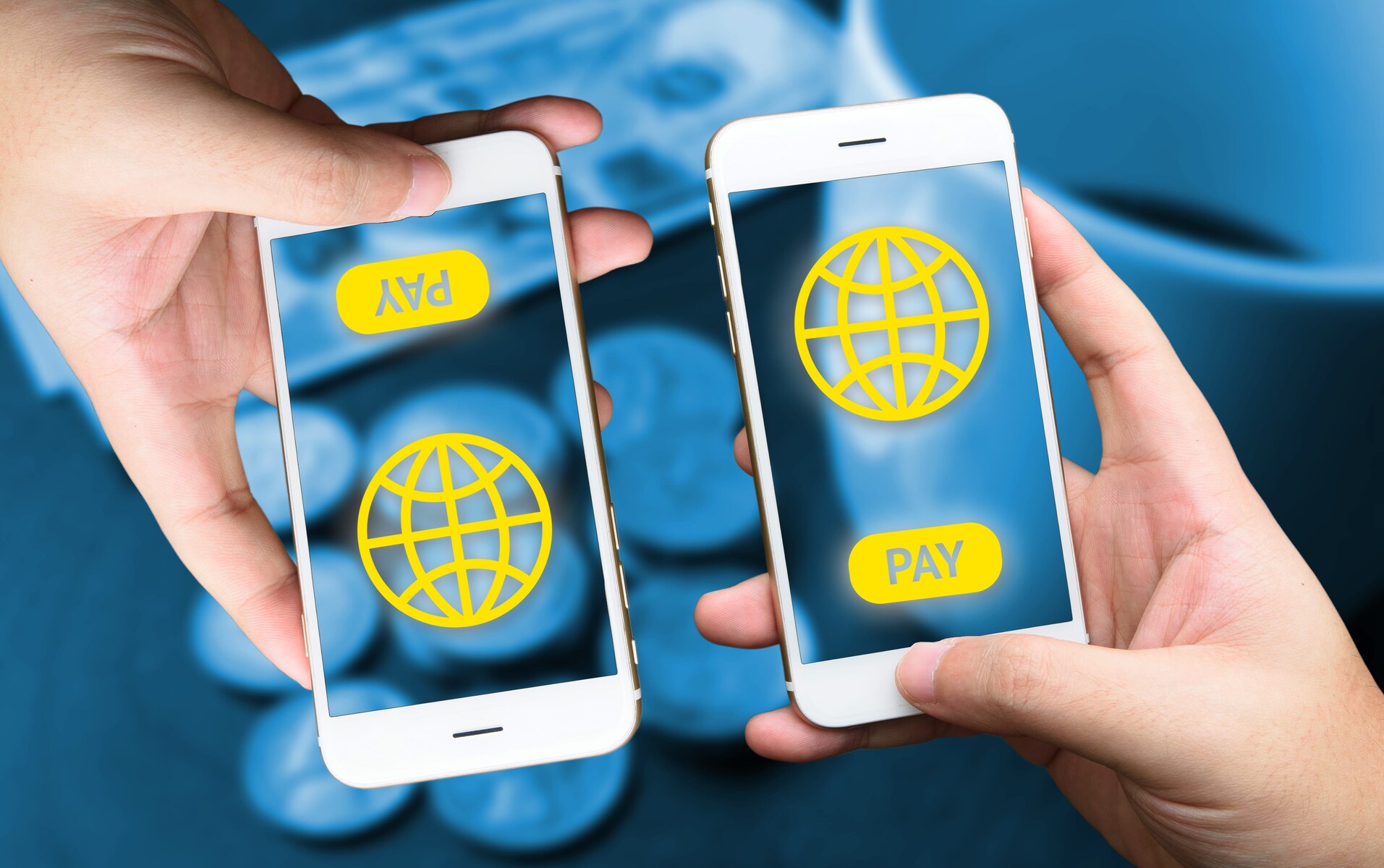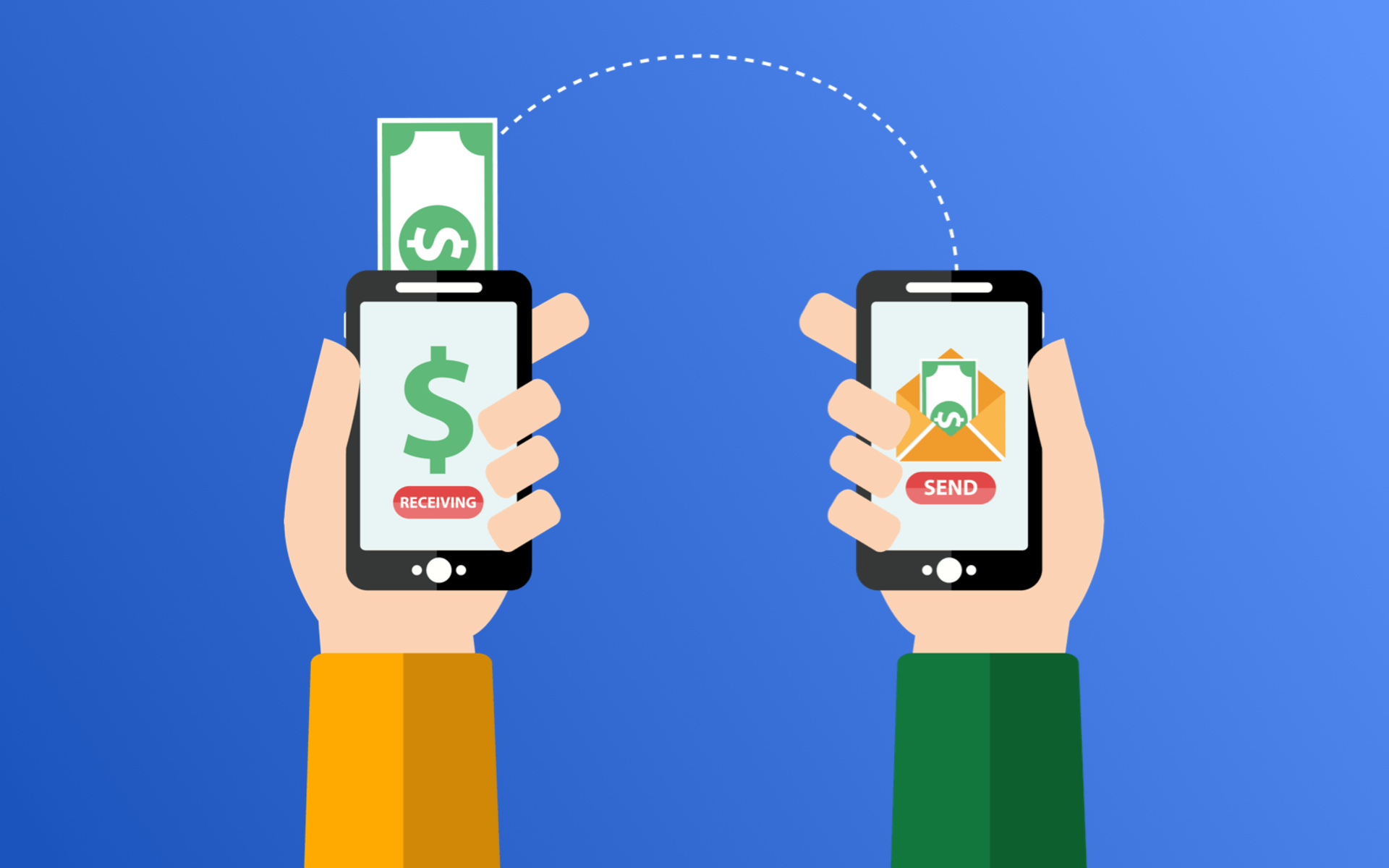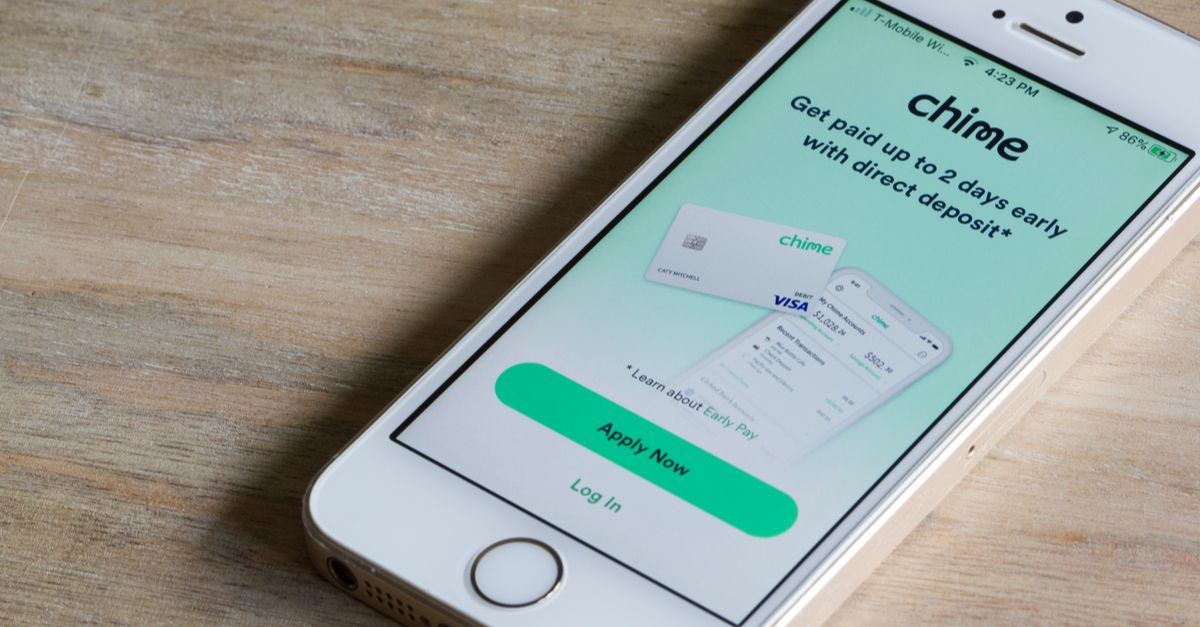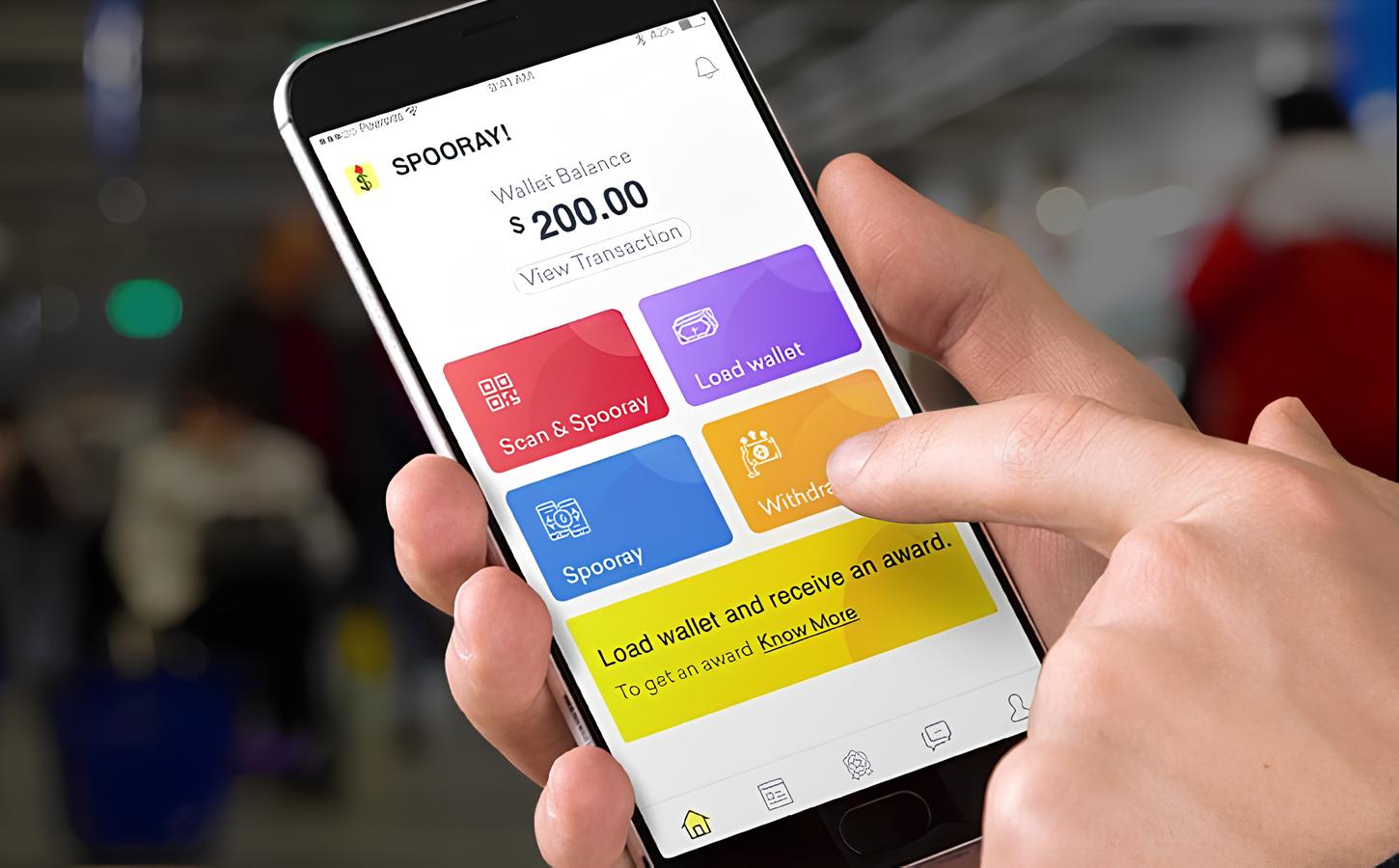Introduction
Money transfer apps have revolutionized the way we send and receive funds across the globe. With just a few taps on a smartphone, users can transfer money securely and conveniently, eliminating the need for traditional banking methods. These apps have gained immense popularity due to their speed, efficiency, and ease of use.
In today’s digital era, developing a money transfer app can be a lucrative venture. However, it is crucial to understand the various aspects involved in creating a successful app that meets the needs of users while adhering to strict regulatory requirements.
This article aims to guide you through the process of developing a money transfer app, from understanding user needs to successfully launching and marketing the app. By following these steps, you can ensure that your app not only provides a seamless and secure money transfer experience but also stands out in a highly competitive market.
Throughout the article, we will explore the key features and functionalities that a money transfer app should have, the technology stack required for development, the importance of designing a user-friendly interface, and the significance of integrating secure payment gateways.
We will also discuss the various payment methods that should be incorporated in the app to cater to a wide range of user preferences. Additionally, we will delve into the crucial backend functionalities that ensure a smooth and efficient transfer process.
Furthermore, we will highlight the importance of complying with regulatory requirements and implementing thorough testing and debugging processes to ensure the app’s reliability. Lastly, we will touch upon strategies for successfully launching and marketing the money transfer app to attract a substantial user base.
By following these guidelines and considerations, you will be well-equipped to develop a robust money transfer app that not only satisfies the needs and expectations of users but also establishes your presence in the rapidly growing digital payments industry.
Understanding the Needs of Users
Before embarking on the development of a money transfer app, it is vital to understand the needs and preferences of your target users. By gaining insights into their expectations, you can create a user-centric app that addresses their pain points and provides a seamless money transfer experience.
One of the primary considerations is the user’s convenience. Users expect a hassle-free and intuitive interface that allows them to send and receive money with minimal effort. It is crucial to prioritize simplicity and ease of use, ensuring that even users with limited technical knowledge can navigate the app effortlessly.
Security is another key concern for users, especially when dealing with financial transactions. Implementing robust security measures, such as secure data encryption and two-factor authentication, instills confidence in users and fosters trust in the app. Transparency in terms of data privacy and sharing practices is also essential, as users expect their personal and financial information to be safeguarded at all times.
Speed and reliability are equally crucial when it comes to money transfer apps. Users expect near-instantaneous transaction processing, without any delays or glitches. Implementing efficient backend systems and leveraging technologies such as real-time notifications and updates ensure a seamless experience for users.
Furthermore, users often have diverse payment preferences. It is essential to incorporate a wide range of payment methods, including credit cards, digital wallets, and bank transfers, to cater to the varying needs and preferences of your user base. Offering multiple options not only enhances user convenience but also increases the chances of attracting a broader user demographic.
Lastly, it is beneficial to gather feedback from users throughout the development process. Conducting surveys, focus groups, or beta testing can provide valuable insights into user preferences, pain points, and areas for improvement. Incorporating user feedback into the app’s design and functionality ensures that it aligns with their needs, resulting in a more successful and user-friendly money transfer app.
Exploring Different Money Transfer App Features
When developing a money transfer app, it is crucial to incorporate a range of essential features that enhance the user experience and provide added value. By understanding and implementing these features, you can create a comprehensive and competitive app in the market.
One of the primary features of a money transfer app is the ability to send and receive funds. The app should provide a user-friendly interface that allows users to initiate transfers quickly. Integration with contact lists or scanning QR codes can simplify the process of selecting recipients and entering their details.
Transaction history and receipts are also essential features to include. Users want to have a clear record of their past transactions, including the amount sent, recipient details, and timestamps. Providing easy access to transaction history and the ability to generate receipts enhances transparency and aids in resolving any potential disputes or issues.
Real-time notifications play a vital role in keeping users informed about the status of their transactions. The app should push notifications to users, notifying them of successful transfers, pending transactions, or any issues that may arise. This feature not only provides peace of mind to users but also helps them stay updated on their financial activities.
Integration with social media platforms can be an innovative feature to consider. Allowing users to share their transactions or send money requests via social media channels can add a social element to the app and facilitate seamless transfers between friends and family members.
Security features should be a top priority in any money transfer app. Incorporating features like biometric authentication, two-factor authentication, or passcode locks can significantly enhance the security of user accounts and transactions. Users should feel confident that their financial information is protected at all times.
Some money transfer apps also offer additional functionalities such as the ability to pay bills, top-up prepaid mobile accounts, or make purchases directly from the app. Including such features can increase user engagement and make the app a one-stop solution for various financial needs.
Finally, integrating customer support features is crucial for addressing user queries and concerns. Providing in-app chat support or a dedicated helpline ensures that users have prompt assistance whenever they require it. This feature contributes to overall customer satisfaction and establishes trust in the app.
By exploring and incorporating these various features into your money transfer app, you can create a comprehensive and user-centric platform that meets the diverse needs of users and stands out in a competitive market.
Choosing the Right Technology Stack
When it comes to developing a money transfer app, choosing the right technology stack is crucial for creating a robust and scalable application. The technology stack consists of the programming languages, frameworks, libraries, and databases that will be used in the development process.
Firstly, consider the choice of programming language. Generally, languages like Java, Swift, or Kotlin are commonly used for building native mobile apps for Android and iOS platforms. These languages offer good performance and access to platform-specific features. Alternatively, cross-platform frameworks like React Native or Flutter can be utilized to build a single codebase that can run on both platforms, reducing development time and effort.
Next, consider the front-end development framework. HTML, CSS, and JavaScript are essential for creating the user interface of the app. Frameworks like Angular, React, or Vue.js can provide reusable components, improved code organization, and faster development time. These frameworks ensure a responsive and dynamic user interface that enhances the user experience.
For the back-end development, the choice of framework and the server-side scripting languages is crucial. Popular options include Node.js, Python with Django or Flask, or Ruby on Rails. These frameworks allow for efficient handling of server requests, database integration, and business logic implementation.
Database selection is also an important consideration. Relational databases like MySQL or PostgreSQL provide robust data storage and retrieval capabilities. Alternatively, NoSQL databases like MongoDB or Firebase can be chosen for their flexibility and scalability.
When it comes to integrating secure payment gateways, it is crucial to select a trusted and reliable third-party payment provider. Popular payment gateways like PayPal, Stripe, or Braintree offer SDKs and APIs that can be integrated into the app, ensuring secure and seamless payment transactions.
Furthermore, cloud hosting services like Amazon Web Services (AWS) or Google Cloud Platform (GCP) can be utilized for hosting the application and managing infrastructure scalability. These services provide easy deployment, scalability, and high reliability.
It is important to assess the long-term viability and support of the chosen technology stack. Consider factors like community support, documentation availability, and the frequency of updates and security patches. A well-supported and widely adopted technology stack ensures that you will have access to resources and assistance in case of any issues.
Ultimately, the choice of technology stack depends on factors like project requirements, development team expertise, budget, and time constraints. It is crucial to carefully evaluate and select the right combination of technologies that will enable you to build a secure, scalable, and efficient money transfer app.
Designing the User Interface and User Experience
When it comes to developing a money transfer app, designing a user-friendly interface and ensuring a seamless user experience are paramount. A well-designed UI/UX enhances usability, increases user engagement, and sets your app apart from the competition.
Start by creating a visually appealing and intuitive interface. Use a clean and modern design that aligns with the overall branding of your app. Incorporate a cohesive color scheme, legible typography, and visually distinct buttons and icons to guide users through the app’s functionalities.
Simplicity and clarity should be at the core of your design. Avoid overwhelming users with too much information or unnecessary visual clutter. Focus on presenting the key features and actions prominently, while keeping secondary options and settings easily accessible but less prominent.
Consistency is crucial in UI design. Maintain a consistent visual style and layout throughout the app to ensure a seamless and familiar user experience. Consistency also helps users navigate the app more easily and reduces the learning curve.
Pay attention to the placement of elements and the flow of interactions. Arrange elements in a logical and intuitive manner, following standard design patterns and user expectations. Ensure that buttons and interactive elements are easily tappable or clickable, and provide visual feedback upon interaction to confirm user actions.
Consider the importance of responsive design, especially when developing for various devices and screen sizes. Your app should adapt smoothly to different screen sizes, maintaining readability and functionality. Incorporating responsive design principles ensures that users can access and use your app seamlessly, regardless of the device they are using.
Optimize the onboarding process to provide a smooth and engaging experience for new users. Keep the registration process simple and minimize the number of steps required. Provide clear instructions and guidance during the onboarding phase to help users understand how to navigate the app and perform basic tasks.
User feedback is valuable in improving the app’s design and UX. Consider incorporating feedback mechanisms such as user surveys, in-app feedback forms, or analytics tools to gather insights into user behavior and preferences. Use this feedback to iteratively refine and enhance your app’s design for better user engagement.
Lastly, conduct thorough testing and usability studies to identify any pain points or areas for improvement. This ensures that your app provides a seamless and intuitive user experience. Gather feedback from real users and make data-driven design decisions to create an app that truly caters to their needs.
By prioritizing user interface and user experience design, you can create a money transfer app that is visually appealing, easy to navigate, and user-friendly. Remember, a great design not only attracts users but also keeps them coming back to your app for their money transfer needs.
Implementing a Secure Payment Gateway
When developing a money transfer app, one of the most critical aspects is implementing a secure payment gateway. A secure payment gateway ensures that transactions are encrypted, protected from unauthorized access, and processed smoothly. Here are the key considerations when implementing a secure payment gateway:
Firstly, choose a trusted third-party payment gateway provider with a strong reputation for security. Popular options include PayPal, Stripe, and Braintree. These providers offer comprehensive security measures and compliance with industry standards, such as PCI-DSS (Payment Card Industry Data Security Standard).
Ensure that the payment gateway follows the latest security protocols, such as Secure Sockets Layer (SSL) or Transport Layer Security (TLS). These technologies encrypt data transmitted between the app and the payment gateway, preventing interception and unauthorized access.
Implement tokenization to enhance security. Tokenization replaces sensitive customer data, such as credit card numbers, with unique identifiers (tokens). This ensures that sensitive information is not stored within the app, reducing the risk of data breaches.
Consider the implementation of two-factor authentication (2FA). 2FA adds an extra layer of security by requiring users to authenticate their identity using a second factor, such as a one-time password or biometric verification. Integrating 2FA enhances the protection of user accounts and prevents unauthorized access.
To mitigate the risk of fraudulent transactions, implement fraud detection and prevention mechanisms. Use AI-powered algorithms to analyze transaction patterns, identify suspicious activities, and flag potentially fraudulent transactions for further investigation. This helps protect both the users and the app from financial losses and reputational damage.
Comply with regulatory requirements, such as Know Your Customer (KYC) and Anti-Money Laundering (AML) regulations. Validate user identities, verify their personal and financial information, and monitor transactions for any suspicious activities. By ensuring compliance, you contribute to a secure and trusted money transfer ecosystem.
Regularly update and patch the payment gateway system to protect against known vulnerabilities and security risks. Stay informed about any security updates from the payment gateway provider and promptly apply them to keep your app secure and up to date.
Conduct regular security audits and penetration tests to identify any potential weaknesses in the payment gateway implementation and overall app security. Address any identified vulnerabilities promptly and update security measures as necessary.
Educate your users about security best practices, such as setting strong passwords, avoiding public Wi-Fi for transactions, and being cautious of phishing attempts. Provide clear instructions within the app regarding security features and precautions, which helps users understand the importance of their own security.
By implementing a secure payment gateway and following best practices in app security, you can ensure that users’ financial transactions are protected, instilling trust and confidence in your money transfer app.
Integrating Various Payment Methods
When developing a money transfer app, it is crucial to integrate various payment methods to cater to the diverse preferences of your users. By offering a wide range of payment options, you can enhance user convenience and increase the adoption of your app. Here are some key considerations when integrating different payment methods:
Start by including traditional payment methods such as credit and debit cards. Ensure seamless integration with major card networks like Visa, Mastercard, and American Express. Users should be able to securely add their card details and make transactions without any hassle.
Consider integrating digital wallet services like PayPal, Apple Pay, or Google Wallet. Digital wallets provide a quick and convenient way for users to store their payment information securely and make purchases without revealing their card details for every transaction. Integration with digital wallets enhances the overall user experience and streamlines the payment process.
Bank transfers are another essential payment method to include. Facilitate secure and direct transfers between users’ bank accounts using APIs or bank authentication services. Integration with banks’ APIs allows users to initiate transfers without leaving the app, eliminating the need for manual data entry.
Explore the possibility of integrating cryptocurrency payments. Cryptocurrencies, such as Bitcoin or Ethereum, are gaining popularity as a form of digital payment. Offering cryptocurrency payment options can attract tech-savvy users and provide a secure and decentralized payment experience.
Prepaid cards and gift cards are also worth considering. Integration with these payment methods enables users to redeem their card balances within the app for money transfers or make payments directly using the card value.
Additionally, partnerships with mobile network operators can allow users to top-up their prepaid mobile accounts within the app. This feature enhances user convenience and provides a one-stop solution for both money transfers and mobile account management.
Subscription-based payment methods can be integrated for users who regularly transfer money on a recurring basis. Enable users to set up scheduled transfers and automate payments using their preferred payment method, ensuring a seamless user experience.
Consider the integration of local or regional payment methods popular in specific markets. For example, in certain regions, mobile money services like M-Pesa or AliPay are widely used. Integrating these local payment methods expands your app’s reach and usability in those markets.
Integrate payment method preference settings within the app, allowing users to select their preferred payment options and save them for future transactions. Personalization in payment method selection enhances user convenience and encourages repeat usage of the app.
Ensure that all payment integrations adhere to strict security standards and comply with relevant financial regulations. Implement robust encryption, secure tokenization, and fraud prevention measures to protect both user data and financial transactions.
By integrating various payment methods, you can create a comprehensive and versatile money transfer app that accommodates the diverse preferences of your users. Offering a wide range of payment options enhances user convenience, fosters trust in your app, and contributes to its success.
Building Robust Backend Functionality
When developing a money transfer app, building a robust backend is vital to ensure a secure, reliable, and efficient money transfer process. The backend of your app handles the processing, storage, and management of data, as well as the integration with external services. Here’s what you need to consider when building the backend functionality:
First and foremost, ensure that the backend architecture is scalable and can handle a growing user base and increasing transaction volume. Utilize cloud-based infrastructure to provide flexibility in scaling resources according to demand, ensuring that the app can handle peak loads without compromising performance.
Implement secure APIs that facilitate communication between the app and the backend. APIs should be well-documented, robust, and adhere to industry best practices for secure data transmission. Implement strict authentication and authorization mechanisms to ensure that only authenticated users can access and interact with the backend resources.
Effective data management is crucial in a money transfer app. Implement a secure and scalable database system, such as MySQL or MongoDB, to store user information, transactions, and other relevant data. Optimize data retrieval and storage operations to ensure high performance and responsiveness.
Implement thorough data validation and sanitization processes to prevent malicious attacks, such as SQL injection or cross-site scripting. Validate user input, encrypt sensitive data, and implement appropriate security measures to protect user information and financial transactions.
Integrate with third-party APIs, such as payment gateways or SMS gateways, to facilitate seamless payment processing and transaction notifications. Ensure that these integrations comply with security standards and have contingency plans in place to handle any service disruptions or API failures. Proper error handling and logging mechanisms should be in place to diagnose and resolve issues promptly.
Implement effective caching mechanisms to improve performance and reduce the load on backend servers. Caching frequently accessed data, such as exchange rates or user preferences, can significantly enhance the overall app experience and reduce latency.
Implement background processes and automated jobs to handle transaction processing, notification sending, and other routine tasks. Automation reduces manual intervention, improves efficiency, and ensures timely execution of critical operations.
Monitor and analyze key performance indicators (KPIs) of the backend infrastructure and services to identify bottlenecks, resource usage patterns, and potential issues. Utilize monitoring tools and implement proactive measures to optimize performance and ensure system uptime.
Regularly backup your data and implement disaster recovery measures to ensure business continuity in case of unforeseen events. Have backup strategies in place to restore data and minimize any potential data loss.
Perform thorough testing and quality assurance of the backend functionality. Conduct load testing, security audits, and penetration testing to identify weaknesses and vulnerabilities. Address any identified issues promptly to ensure a secure and reliable money transfer app.
By focusing on building a robust backend, you can ensure the security, scalability, and reliability of your money transfer app. A well-designed and efficient backend infrastructure forms the foundation for a successful app that provides a seamless and secure money transfer experience to users.
Ensuring Compliance with Regulatory Requirements
Compliance with regulatory requirements is crucial when developing a money transfer app. Adhering to relevant financial regulations helps protect users’ financial data, ensures a secure money transfer environment, and maintains trust in your app. Here are key considerations for ensuring compliance:
Research and understand the legal and regulatory frameworks that govern money transfers in the regions where your app operates. Familiarize yourself with laws related to data privacy, fraud prevention, and financial transactions. This includes regulations such as the General Data Protection Regulation (GDPR) in Europe or the Bank Secrecy Act (BSA) in the United States.
Implement strong Know Your Customer (KYC) procedures to verify customer identities and prevent fraudulent activities. Verify user identities through document verification, address verification, or other reliable methods. Keep detailed records of customer information to ensure compliance with anti-money laundering (AML) regulations.
Ensure that user data is collected, stored, and processed in compliance with data protection and privacy laws. Implement safeguards to protect personal and financial information, including encryption, access controls, and secure storage measures. Be transparent about your data collection practices and provide clear privacy policies to users.
Partner with reliable and trustworthy financial institutions or payment processors that have robust compliance programs in place. By aligning with reputable partners, you can ensure that your app meets the highest security and regulatory standards.
Stay updated on changes in regulations and adjust your app’s features and processes accordingly. Regulatory requirements evolve, and new laws may be introduced, so it is essential to monitor these updates and make necessary adjustments to your compliance framework.
Implement proper record-keeping practices to maintain audit trails and transaction histories. Retain transaction records for a legally required period and be prepared to provide these records in response to regulatory inquiries or audits.
Periodically conduct internal audits to assess compliance with regulatory requirements. Identify any potential violations or gaps in your compliance procedures and take necessary steps to rectify them. Consider engaging external auditors or consultants to ensure a thorough and unbiased evaluation.
Collaborate with legal advisors who specialize in financial regulations to ensure that your app meets all applicable legal requirements. Seek legal counsel to review your compliance framework, terms of service, and privacy policies to ensure compliance and mitigate legal risks.
Train your staff on regulatory compliance obligations. Make sure they are aware of their responsibilities regarding data security, fraud prevention, and customer privacy. Provide ongoing education and updates to ensure the team is well-informed about changes in regulations.
By ensuring compliance with regulatory requirements, you establish a foundation of trust and credibility for your money transfer app. Compliance not only protects your users but also mitigates legal risks and fosters confidence in your app’s security and reliability.
Testing and Debugging the App
Testing and debugging are essential phases in the development of a money transfer app to ensure its functionality, performance, and security. Robust testing processes help identify and fix any issues or bugs, ensuring a seamless user experience. Here are key considerations for testing and debugging your app:
Start with unit testing, which involves testing individual components, functions, or modules of the app. Unit tests help catch errors and ensure that each component functions as expected. Use testing frameworks and tools specific to the programming language or framework of your app to automate and streamline the testing process.
Perform integration testing to verify the proper functioning of individual components when integrated as a whole. Test the interaction between different parts of the app, including APIs, databases, and third-party integrations. This ensures that the app operates smoothly as a unified system.
Conduct end-to-end testing to simulate real-world scenarios and user workflows. Test various user interactions, transaction flows, and edge cases to identify any potential issues. This testing method provides a comprehensive assessment of the app’s functionality and user experience.
Implement security testing to identify vulnerabilities and potential security breaches. Conduct penetration testing to assess the app’s resistance against malicious attacks. Test for common security vulnerabilities, such as SQL injection or cross-site scripting, and address any identified weaknesses.
Ensure that the app is optimized for different devices and operating systems by conducting compatibility testing. Test the app on various devices, screen sizes, and operating system versions to ensure consistent performance and visual presentation across platforms.
Implement performance testing to assess the app’s speed, response time, and scalability. Test the app under different loads and simulate peak traffic conditions to identify any performance bottlenecks. Address any issues related to slow loading times or unresponsive behavior to ensure optimal user experience.
Enable logging and error tracking mechanisms to collect and analyze runtime errors and exceptions. Implement crash reporting tools that can provide detailed crash reports to help diagnose and resolve issues. Regularly review error logs and address identified bugs and crashes promptly.
Consider utilizing beta testing or user testing to gather feedback from real users before the app is launched. This allows for valuable insights into usability and user experience. Collect feedback through surveys or feedback forms and address any user-reported issues or suggestions.
Continuously monitor and test the app post-launch to address any issues that may arise. Monitor performance metrics, user feedback, and server logs to identify and resolve any emerging problems. Regularly release updates and bug fixes to ensure continuous improvement.
Document your testing procedures and maintain a test suite for future reference. This helps ensure consistency in testing methodologies and allows for efficient regression testing when new features or updates are implemented.
By thoroughly testing and debugging your money transfer app, you can identify and rectify any issues, ensuring a reliable and user-friendly experience. Testing is instrumental in building a quality app that meets the expectations of your users and establishes trust in the platform.
Launching and Marketing the Money Transfer App
Launching and marketing your money transfer app effectively is critical to attract users and create a successful presence in the market. A well-executed launch strategy and comprehensive marketing plan can help drive user adoption and increase the app’s visibility. Here are key considerations when launching and marketing your app:
Start by defining your target audience and understanding their needs and preferences. Develop user personas to guide your marketing efforts and tailor your messaging to resonate with your intended audience.
Create a compelling app store listing that effectively communicates the value and functionality of your app. Craft an attention-grabbing app description, optimize your keywords, and use appealing visuals to entice potential users.
Reach out to tech influencers, bloggers, and media outlets to generate buzz and secure positive reviews or coverage. Offer them early access to your app and request their feedback, which can help generate interest and credibility.
Utilize social media platforms to create awareness and engage with your target audience. Develop a social media strategy that includes regular updates, engaging content, and targeted advertisements to reach a wider user base.
Consider implementing referral programs or incentives to encourage users to refer your app to their friends and family. Referrals can be an effective way to acquire new users and build a loyal user base.
Invest in search engine optimization (SEO) to increase your app’s visibility in app store searches and search engine results. Optimize your app’s title, keywords, and description to improve its discoverability and attract organic traffic.
Implement app analytics and tracking to gather meaningful insights into user behavior, in-app engagement, and conversion rates. Analyze this data to refine your marketing strategies and optimize your app’s performance across various marketing channels.
Collaborate with relevant businesses or financial institutions to cross-promote your app. Offer incentives or benefits to their customers who download and use your app, creating a mutually beneficial partnership.
Consider running targeted advertising campaigns on digital platforms, such as search engines, social media platforms, or mobile ad networks. Display ads, video ads, or sponsored content can help increase brand visibility and drive user acquisition.
Engage with your users through personalized communication, such as emails or push notifications, to keep them informed about app updates, new features, or promotional offers. Building a strong relationship with your users through effective communication helps foster loyalty and encourages repeat usage.
Monitor and respond to user reviews and feedback in app stores and on social media platforms. Address any issues or concerns promptly and provide excellent customer support. Positive reviews and satisfied user experiences can significantly contribute to your app’s reputation and user acquisition.
Regularly analyze and evaluate your marketing efforts through key performance indicators (KPIs) such as user acquisition cost, conversion rates, and user retention rates. Optimize your marketing strategies based on insights gathered and adjust your approach as needed.
Launching and marketing your money transfer app requires a well-crafted plan and a multi-channel approach. By effectively promoting your app, you can create awareness, attract users, and position your app as a trusted and preferred choice for money transfers.
Conclusion
Developing a money transfer app requires careful planning, attention to detail, and a user-centric approach. By understanding the needs of users, exploring different app features, choosing the right technology stack, and ensuring compliance with regulatory requirements, you can create a robust and secure app that meets user expectations.
Designing a user-friendly interface and seamless user experience enhances engagement and sets your app apart from the competition. Integrating various payment methods caters to the diverse preferences of users, offering convenience and flexibility in transferring funds.
Implementing a secure payment gateway safeguards transactions and protects sensitive data. Building a solid backend infrastructure ensures reliability and scalability, while adhering to regulatory requirements maintains trust in the app.
Thorough testing and debugging processes identify and resolve any issues, guaranteeing a smooth and efficient money transfer process. Finally, launching and marketing your app effectively drives user adoption and establishes a strong presence in the market.
As the digital payments landscape continues to evolve, staying updated with industry trends and user demands is crucial. Regularly updating your app with new features, addressing user feedback, and monitoring market changes will help your money transfer app remain competitive and meet the ever-changing needs of users.
Ultimately, the successful development and launch of a money transfer app rely on a comprehensive understanding of user needs, meticulous attention to technical details, and effective marketing strategies. By following these guidelines, you can build a valuable and user-centric app that facilitates seamless and secure money transfers for your users.

























